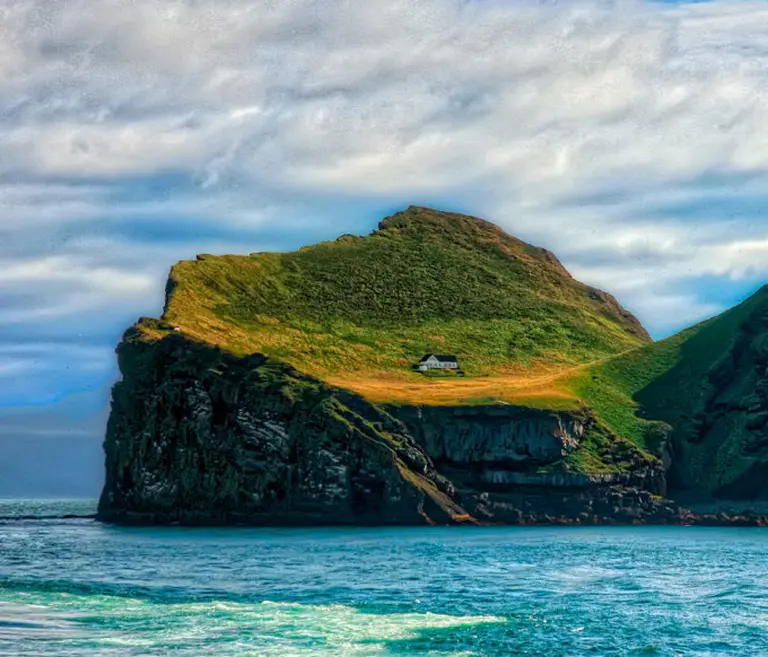The “Loneliest House in the World” is a small white building located on Elliðaey, a remote island off the southern coast of Iceland. The island spans 110 acres and is home to a large population of puffins and other Nordic seabirds. Despite its eerie appearance, the house’s origin story is neither apocalyptic nor sinister, as some rumors suggest.

The Real Story Behind the House
The house was constructed in the 1950s by the Elliðaey Hunting Association as a hunting lodge for members who visited the island to hunt puffins. While it has no permanent residents, the house is occasionally used as a shelter by hunters or visitors. Tourists are permitted to visit the house, though staying overnight is rare. However, the unique experience of spending a night on the isolated island is undoubtedly unforgettable.

Common Myths and Misconceptions
- Zombie Apocalypse Shelter
Some claim that the house was built by a billionaire to serve as a refuge during a zombie apocalypse. However, this is a baseless rumor with no factual support. - Gift to Björk
Another widespread myth is that the Icelandic government gifted the island to the famous singer Björk. This confusion arose in the early 2000s when Davíð Oddsson, a former Icelandic prime minister, suggested Björk be granted exclusive rights to use an island named Elliðaey. However, the Elliðaey in question was a different island located in Breiðafjörður Bay on Iceland’s west coast.

Historical Context
In the 18th century, the island was inhabited by five families, who relied on fishing, puffin hunting, and livestock farming. The last residents left the island in 1930, leaving it uninhabited ever since. Accessing Elliðaey has always been challenging due to its steep cliffs and remote location.

A Treacherous Journey
Visiting Elliðaey is not for the faint-hearted. The journey involves a cold boat ride across turbulent waters, followed by a daring leap from the boat to the island’s steep slopes. Visitors must grab hold of a rope to hoist themselves onto the island, as failure to do so can result in falling into the icy ocean. Once on the island, climbing its nearly vertical cliffs is another daunting task.

Primitive Living Conditions
The house lacks electricity, plumbing, or central heating. However, it does have a sauna, powered by a natural rainwater collection system. All food and other necessities must be brought in from the mainland. Visitors must also prepare for unpredictable weather, as sunny days on Elliðaey are rare.

A Protected Site
Elliðaey is officially classified as a protected area by the Icelandic government. While legal access to the island is possible by boat, it is recommended to enlist the help of local experts due to the icy waters and potential legal challenges. Staying on the island requires meticulous planning and determination but offers a once-in-a-lifetime experience for the adventurous.








